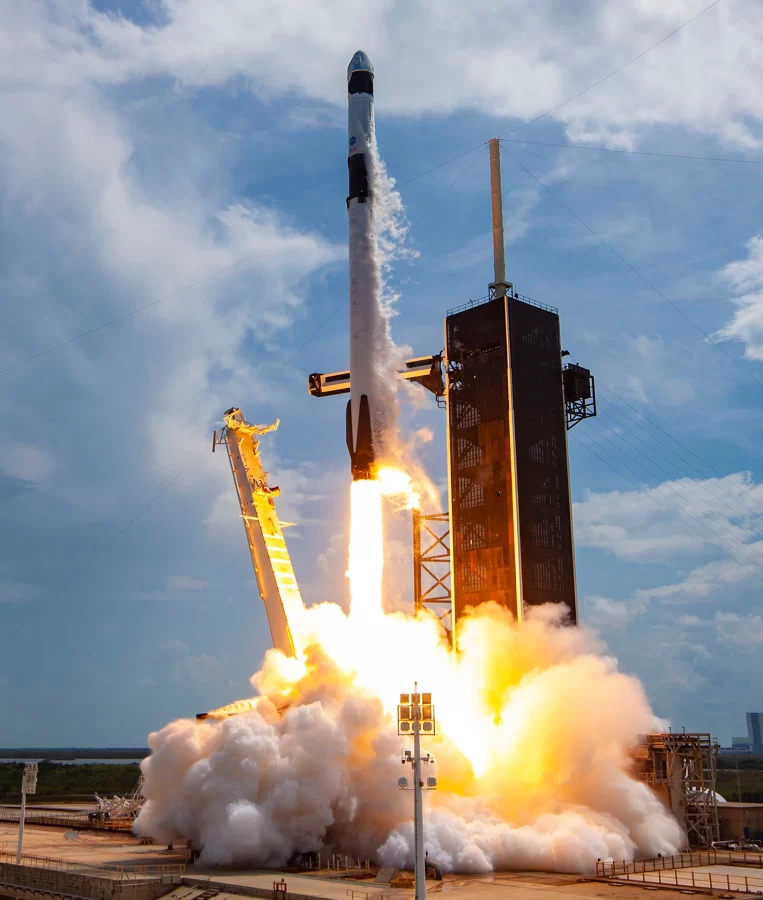A historic launch from SpaceX: the first commercial launch of humans, sending two astronauts to the International Space Station
Staying curious and exploring the limitless possibilities of outer space
As children, we’re told to “shoot for the moon, and if you miss, at least you’ll land among the stars.” This, along with my parents introducing me to series such as Cosmos: A Spacetime Odyssey and Apollo: Missions to the Moon have ignited my curiosity for outer space and the advances in science that allow us to find answers to some of the greatest mysteries.
Still, astronomy doesn’t seem as necessary to our education in comparison to some other branches of science: biology, chemistry, and earth sciences to name a few. This is an initially reasonable conjecture; what use is learning about celestial objects lightyears away when they have a minimal impact on the progression of Earth?
The answer lies in all potential that can be found outside of our own world: new elements, hospitable planets, a reduced gravity environment, and infinitely more discoveries that have sparked the curiosity of scientists. Ultimately, the more information gained from the outside, the better our understanding of Earth is.
Prior to 60 years ago, an image of Earth as a whole from space didn’t exist. The general consensus of what Earth looked like was surprisingly relatively accurate beforehand with improvements in astronomy; still, I can’t imagine a time without these concrete images that have played such an influential role in my learning.
These studies on the conditions of other planets have given us a greater appreciation for the unique and special climate of Earth, furthering advances in Environmental Science and working to protect our atmosphere. If Homo sapiens continue to sustain themselves for the next four billion years, they will need to find an alternate location to live in, which is why the dream to one day colonize Mars is so essential to future generations.
The expanding curiosity and passion for space are evident in the private companies that have paved their own path to journey outside of Earth’s atmosphere. Blue Origin, Virgin Galactic, and SpaceX are all examples of how interest has amplified with entrepreneurs. These investments have made it cheaper to send objects into orbit.
Overall, these efforts have astonishing benefits for everyone else back home. The SpaceX Dragon cargo craft has been sent on many missions to the International Space Station. This resupply ship’s most recent mission is to deliver not only supplies for the crew but also conduct experiments that aren’t possible on Earth.
For example, some investigations study how human muscle cells age in a microgravity environment. Through a study from the University of Florida, scientists will gain insight into how the cells react to a space and their genetic changes. Other investigations include those from middle school and high school students who have the unique experience to participate in Student Spaceflight Experiments Program.
With initiatives such as these, the International Space Station succeeds in both aiding research in other fields and inspiring young scientists. The discoveries of the future depend on the motivation of today. Clearly, funding studies in space is a valuable enterprise that already has and will continue to have lasting impacts.
